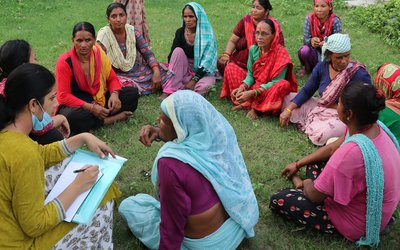At present our government appears to be preparing to implement the Buri Gandaki storage project to resolve our power shortage problem in near future totally ignoring the vast downstream benefit accruing from the use of regulated water, which would be on a par with the power benefit. Obviously, such decision would be detrimental to our national interest.
In selection of storage type hydropower projects in near future our first priority should undoubtedly be the implementation of the Sun-Kosi diversion storage project ( dam site at Kurule), which is a project long since recommended by FAO/UNDP study. Apart from generation of abundant cheap firm energy, the proposed Sun-Kosi project would be providing sufficient regulated water to irrigate year round vast area of lands between Parsa district and the Kosi river. The Sun-Kosi storage project is also expected to play a vital role in controlling to a considerable extent the Kosi floods, thus saving the life and property of innumerable people living in Sunsari, Morang and Saptari districts. Unfortunately there is almost a complete lack of awareness how important this project is to people in Eastern Terai.
Recovery of Irrigation Benefit
Irrigation benefit to accrue from our storage projects can not be considered subsidiary to power benefit. In some cases irrigation benefit can far exceed the power benefit. According to detailed feasibility study of the Kankai storage dam project carried out by GTZ of then West German Government in 1980 the annual net power benefit was US $ 7.244 million , whereas the annual net irrigation benefit was found to be as high as US $ 31.486 million.
Our country does not need regulated water from the Buri Gandaki storage project for irrigation in Nepalese territory. Nepal must hold negotiations with India to reach agreement on recovery of downstream benefit before taking any decision on implementation of the Buri Gandaki storage project. This type of arrangement to recover downstream benefit has been made between Canada and the USA. Canada recovers 50% of the net downstream benefit accruing to the USA from the use of regulated flow released from the storage dams after power generation in Canada. Even the Africa’s most backward landlocked country the Kingdom of Lesotho surrounded on all sides by South Africa is receiving 56% of the net benefit accruing to South Africa from the use of regulated water flowing from the storage dams built in Lesotho.
Some years back the Bajpee government of India had constituted a high level commission to recommend Indian government about the royalty to be paid to Nepal for regulated flows to be made available to India. Unfortunately our policy makers are not yet seen taking any interest on this extremely vital issue for our country.
Why the Sun-Kosi Project before Kosi Project
Sun-Kosi Diversion Storage Project is the most important project for irrigation in Eastern Terai. This project is the only best hope for resolving the worsening food grains shortage problems of Nepal. It is truly a life line project for our country. Nepal under no circumstances can sacrifice this project.
During the first official visit of our then prime-minister G.P. Koirala to Jndia it was agreed to conduct detailed feasibility study of mega Kosi high dam project. On our insistence it was decided later on to include the detailed feasibility study of Sun-Kosi storage project and also the Kosi Canal Waterway Project for the following reasons.
Sun-Kosi storage dam project, if built first, does not preclude later on the construction of the Kosi storage project. But the Kosi storage dam project, if built first, would preclude for ever the construction of the Sun-Kosi Diversion storage project.
The proposed Kosi storage reservoir would not be sufficiently large to fully regulate the Kosi high floods. There will be significantly big releases of clear water during high floods from the Kosi storage reservoir, which would result to severe erosion of coarse materials just downstream of the dam where the bed slope of the Kosi river is quite steep. The eroded bed material would be deposited on river bed further downstream in India where the bed slope is mild resulting to acute problem of flooding in surrounding areas. This type of problem will not arise after the construction of only the Sun-Kosi storage project. Nonetheless, the Sun-Kosi storage dam alone would be solving to a considerable extent the Kosi flood problems for quite a long period. In view of the urgency to find quick solution to Kosi flood problem the best way is indeed the implementation of the Sun-Kosi storage dam project. Needless to explain that the implementation of giant Kosi dam project, which would be world’s one of the biggest project, would take a very long time thus people would be denied protection against the deluge for a very long time.
Boulder Dam of the USA
A serious degradation phenomenon was observed in Boulder dam of the USA. Clear water flowing from the Boulder reservoir caused severe degradation of river bed downstream of the dam. Within six months of the closure of the river diversion gates in 1935 the bed was lowered by from 2 to 6 feet over a distance of 13 miles. By 1947 the river bed in the 77 mile canyon reach had been lowered between 6 and 14 feet. Owing to the exposure of rock ledges the river bed became stable. However, at Needles, about 130 kilometers away downstream, the river bed rose by 6 meters necessating the construction of very expensive flood control structures.
Nepal’s Absolute Right
The Clause 4 of the revised Kosi Treaty signed in 1966 guarantees Nepal’s absolute right to use the entire water of the Sun-Kosi and Kosi: Clause4 – HMG shall have every right to withdraw for irrigation and for any other purpose in Nepal water from the Kosi river and from the Sun-Kosi river or within the Kosi basin from any other tributaries of the Kosi river as may be required from time to time. The union (India) shall have the right to regulate all the balance of supplies in the Kosi river at the barrage site thus available from time to time and to generate power in the Eastern Canal.
Foreign Assistance
In the past we could not get foreign financial assistance from various donor agencies like the World Bank, ADB and others needed to implement multipurpose storage projects because we did not have water sharing agreement with India. It is obvious that there would not be this type of hurdle in implementation of the Sun-Kosi storage project under the financial assistance of various international agencies.

Dr. A.B. Thapa
Thapa writes on water resources issue
- Dudhkosi Multipurpose Project
- Jul 11, 2022
- Dudh-Kosi Power Project And Kosi Treaty
- Sep 27, 2021
- Uttarakhand Glaciers And Recent Disaster: A Lesson To Our Country
- Mar 02, 2021
- Multipurpose Langtang After Melamchi: Inter-Basin Water Transfer
- Nov 04, 2020
- Large Storage Dams Projects Wary of Giving Away Children’s Inheritance
- Dec 22, 2019















